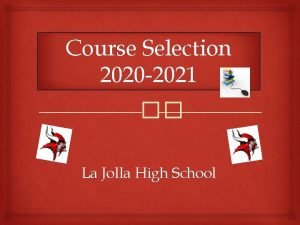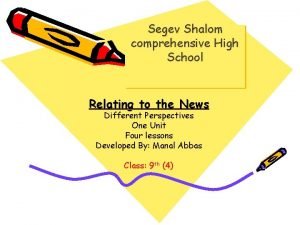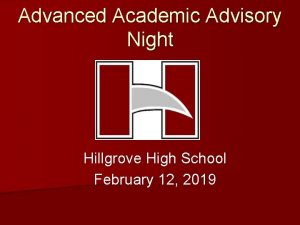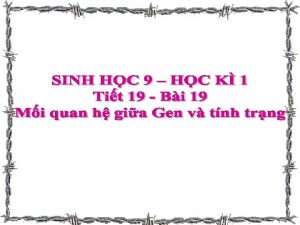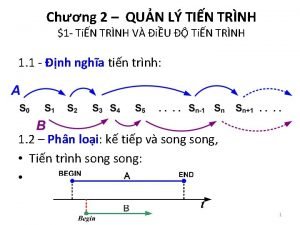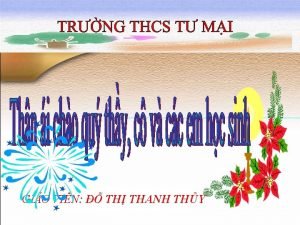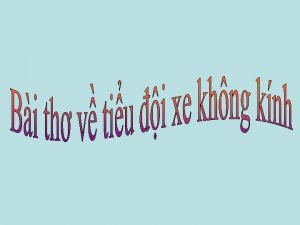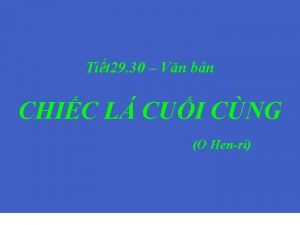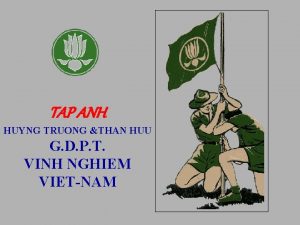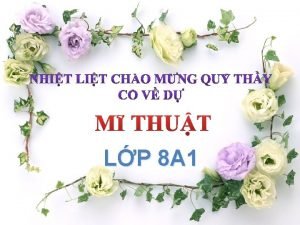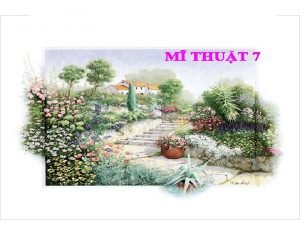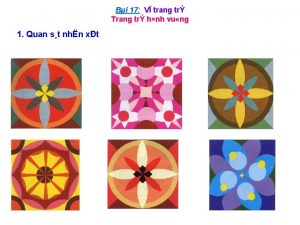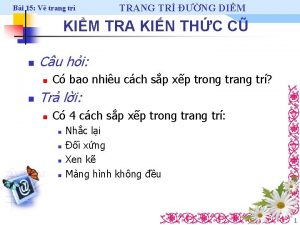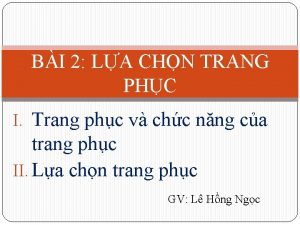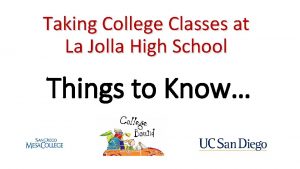TRANG VU LA JOLLA HIGH SCHOOL MATH FOR
















- Slides: 16

TRANG VU LA JOLLA HIGH SCHOOL MATH FOR AMERICA, SAN DIEGO TVU@SANDI. NET

Mystery Triangle I am thinking of a triangle. Your challenge is to uncover my triangle by drawing an identical triangle identical with as few clues as possible. Think about what clues you would like me to give you. SHOW MYSTERY TRIANGLE

GROUP DISCUSSION What clues did you choose? Did those clues help you draw a triangle that is congruent to the mystery triangle? Is it possible to draw another triangle that is not congruent to the mystery triangle with your selected clues? What set of clues guarantees that the triangle would be congruent to the mystery triangle? Why? What set of clues does not guarantee that the triangle would be congruent to the mystery triangle? Why not?

COMMON CORE STANDARDS CCSS. Math. Content. 7. G. A. 2 Draw (freehand, with ruler and protractor, and with technology) geometric shapes with given conditions. Focus on constructing triangles from three measures of angles or sides, noticing when the conditions determine a unique triangle, more than one triangle, or no triangle. CCSS. Math. Content. HSG-CO. B. 8 Explain how the criteria for triangle congruence (ASA, SAS, and SSS) follow from the definition of congruence in terms of rigid motions.

1. What are the mathematical objectives of the problem; that is, what are the ways of understanding and ways of thinking that are likely to be necessitated or solidified by the problem? 2. What difficulties or insights might occur as students solve the problem? 3. Teaching actions?

(1) What are the mathematical objectives of the problem; that is, what are the ways of understanding and ways of thinking that are likely to be necessitated or solidified by the problem? Ways of thinking: Able to draw segments and angles accurately using ruler, compass, and protractor. Able to use compass to determine intersection points that form vertices of a triangle with given side lengths Understand that sides of an angle can be lengthened or shortened, especially when only angle measures are given. Able to generalize from specific cases to triangle congruence postulates. Able to correct themselves after realizing that they chose the wrong clues. Able to draw two different triangles in the case SSA.

(2) What difficulties or insights might occur as students solve the problem? Unable to use tools correctly, especially the protractor. Unable to place vertices of angle at the correct position. Choose the clues that do not guarantee triangle congruence, unable to understand why. Not choosing enough clues. Unable to understand what it means for two triangles to be congruent. Unable to explain why the selected clues produce a unique triangle. Looking ahead in the book for the triangle congruence shortcuts prevents the students from understanding why those postulates seem reasonable. Thinking only in terms of acute triangles Conclude that the triangle did not exist not knowing that the error was in the construction.

TEACHING ACTIONS Discuss what it means for two triangles to be congruent. Discuss different cases of triangle congruence shortcuts. Discuss postulates (SSS, SAS, ASA) vs. theorems (AAS, HL). Use compass to determine vertices of triangle if only side lengths are given. Allow more time for each student to investigate different cases.

STUDENT WORK SAMPLES This student asks for angle A = 62°, angle C = 86°, and side AC = 7 cm. His response: A triangle is 180° total, so knowing angle A and C, you can get angle B. I don’t see what other information you would need to make a triangle besides knowing the measurement of the three angles. Having the measurements of the sides seem unnecessary. He drew a triangle that was not congruent to the mystery triangle.

STUDENT WORK SAMPLES This student asks for angle A = 62°, AC = 7 cm, and AB = 12 cm. Her response: By knowing the 2 sides and 1 angle congruent to the mystery triangle, you can build a congruent triangle then. So by constructing angle A = 62°, there needs to be 2 lines to create angle A. But you know both measurements of AB and AC so AC = 7 cm and AB = 12 cm. Once you get the angle and its length, than you can connect AC and AB by a line, which turns out to be 11 cm. This line, CB, determines the angle B and angle C. Angle B turns out to be 32° and C = 86°.

STUDENT WORK SAMPLES This student asks for AB = 12 cm, BC = 11 cm and AC = 7 cm. His response: To find the triangle, I was given the lengths of all three sides. With the given clues, it is not possible to find another triangle with the method of using a compass since if you did not place C at the intersection of the circles from by AC and BC, it would be an open figure.

STUDENT WORK SAMPLES This student asks for AB = 12 cm, BC = 11 cm and AC = 7 cm. Her response: It is not possible to get any other triangle but this one because AC and BC have to intersect at one point that still allows the sides to keep their original measurements. You can change their position, but the measurements will remain the same.

STUDENT WORK SAMPLES This student asks for AB = 12 cm, angle A = 62°, angle B = 32° His response: I was given angle A & B along with side AB. I measured out the distance from A to B, then measured the angles A & B. After I drew lines from the angles and saw where they meet up then checked the angle with its true measure. There is no other triangle you can make with these points and lines without moving point C.

STUDENT WORK SAMPLES This student asks for angle A = 62°, angle B = 32° and BC = 11 cm Her response: I got clues angle A, angle B, and BC. I could use these clues because I knew 2 angles and one side. First, I subtracted 62°- 32° and got 86°. This was the measure of angle C. I drew a line, BC that was 11 cm long and then measured the angles on both sides of the line. I connected the points and formed the triangle. This angle is unique because you extend the lines and they connect to form 62°.

MYSTERY TRIANGLE

A farmer wants to make a triangular pen for his pigs. He only has 100 feet of fencing. If he uses all the fencing, describe all possible triangular pens he can make.
 La jolla high school powerschool
La jolla high school powerschool Carlton comprehensive high school math
Carlton comprehensive high school math Hillgrove high school math
Hillgrove high school math Sóc nhí câu đố
Sóc nhí câu đố Mối quan hệ giữa gen và tính trạng
Mối quan hệ giữa gen và tính trạng Dừng chân nghỉ lại nha trang
Dừng chân nghỉ lại nha trang Các trạng thái của tiến trình
Các trạng thái của tiến trình Cái gậy cạnh quả trứng gà
Cái gậy cạnh quả trứng gà Lóa màu trắng hoa
Lóa màu trắng hoa Tạo đặc điểm và thiết kế trang phục rối
Tạo đặc điểm và thiết kế trang phục rối Lều trại
Lều trại Vẽ và trang trí lọ hoa
Vẽ và trang trí lọ hoa Tập thơ vầng trăng quầng lửa
Tập thơ vầng trăng quầng lửa Tác giả o hen-ri
Tác giả o hen-ri Dr thu-trang phung
Dr thu-trang phung Muôn thiên thần cánh trắng
Muôn thiên thần cánh trắng Trang trí chậu cảnh lớp 8
Trang trí chậu cảnh lớp 8
